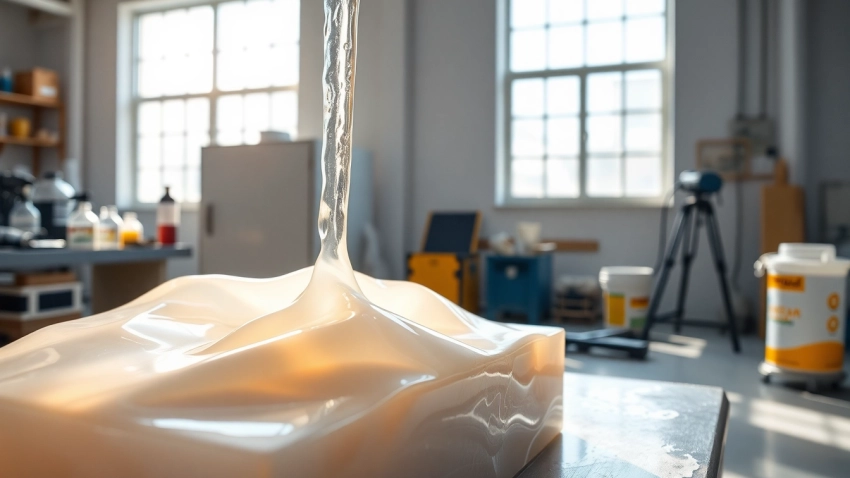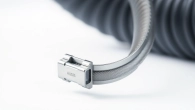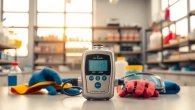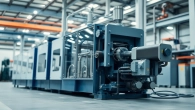
Essential Insights on Infusion Resins for Advanced Composite Manufacturing
Understanding Infusion Resins
Definition and Characteristics of Infusion Resins
Infusion resins are a specialized category of resin used predominantly in the manufacturing of composite materials. These low-viscosity resins are designed to facilitate the impregnation of reinforcing fibers during the resin infusion process. Unlike traditional resin application methods, infusion resins remain fluid even at room temperature, allowing for efficient flow throughout complex geometries in molds. One of the primary characteristics of infusion resins is their ability to create low void content and high-quality finished parts, crucial for applications requiring mechanical strength and durability. Their chemical formulation often includes additives that enhance performance, such as curing agents and flow modifiers, ensuring that they meet the rigorous demands of various industrial applications. Infusion resins are often used in sectors ranging from aerospace to automotive manufacturing.
Types of Infusion Resins and Their Applications
Infusion resins can be categorized into several types based on their chemical composition and application methods. The most common types include epoxy, vinyl ester, and polyurethane resins. Each type has its unique characteristics that make it suitable for different applications:
- Epoxy Resins: Known for their superior mechanical properties and excellent adhesion, epoxy resins are widely used in aerospace, marine, and automotive industries. Their ability to withstand harsh environmental conditions makes them ideal for structural applications.
- Vinyl Ester Resins: These resins boast improved corrosion resistance and are often employed in applications involving chemical exposure. They are commonly found in the production of tanks, pipes, and other equipment used in the chemical industry.
- Polyurethane Resins: While less common for infusion processes, polyurethane is valued for its flexibility and toughness, making it useful for applications requiring impact resistance, such as sports equipment and automotive components.
These infusion resins can be tailored further with additives to enhance properties like fire resistance, UV resistance, and thermal stability, thus broadening their applicability in different domains.
Benefits of Using Infusion Resins in Manufacturing
Utilizing infusion resins for manufacturing offers numerous advantages over traditional resin application methods:
- Reduced Weight: Due to their low density, infusion resins help create lightweight components without compromising strength.
- Enhanced Durability: The resulting composite structures have improved mechanical properties, such as resistance to impact and fatigue.
- Lower Emissions: The infusion process is more controlled, which can result in lower volatile organic compound (VOC) emissions compared to traditional methods.
- Improved Process Efficiency: The infusion method allows for quicker and more consistent production rates, enabling manufacturers to scale operations effectively.
- High-Quality Finish: The thorough impregnation of reinforcing materials minimizes voids and bacteria retention, resulting in superior surface quality and performance of final products.
Choosing the Right Infusion Resins
Factors to Consider When Selecting Infusion Resins
Selecting the appropriate infusion resin can significantly impact the performance and reliability of the final product. Here are key factors to consider:
- Mechanical Properties: Evaluate the required strength, stiffness, and toughness based on the intended application. Resins must meet specific mechanical requirements to ensure durability.
- Cure Time: Depending on production schedules, the selected resin’s gel and cure times may be critical factors. Resins with faster curing times can elevate production efficiency.
- Viscosity: The resin’s viscosity affects its flow characteristics and ability to saturate fabrics. Low-viscosity resins are preferred for complex molds.
- Compatibility: Ensure that the resin is compatible with the chosen reinforcement materials (such as fiberglass or carbon fiber) to avoid bonding issues.
- Environmental Conditions: Consider the exposure to chemicals, moisture, and temperature extremes to choose a resin with suitable chemical resistance.
Common Applications and Best Practices
Infusion resins are utilized in a variety of applications across multiple industries, including:
- Aerospace and Defense: Used in the creation of lightweight structures and components that require high strength-to-weight ratios, such as aircraft fuselages and wings.
- Marine: Employed in boat hulls and components exposed to harsh marine environments, benefiting from improved resistance to water and chemicals.
- Automotive: Commonly used in lightweight body panels and structural components, aiding in the reduction of overall vehicle weight.
- Sports Equipment: Found in bicycles and sporting goods requiring high strength and decreased weight for improved performance.
- Construction: Used in certain architectural applications, providing durability combined with aesthetic appeal.
Best practices for using infusion resins include adhering to proper mixing ratios, maintaining optimal ambient conditions during curing, and conducting thorough post-cure inspections to ensure integrity.
Performance Metrics of Different Infusion Resins
To effectively choose the best infusion resin for your project, understanding key performance metrics is essential:
- Tensile Strength: The maximum amount of tensile stress that a material can withstand before failure, typically measured in megapascals (MPa).
- Flexural Modulus: An indicator of the material’s stiffness, important for ensuring structural stability under load.
- Impact Resistance: The ability of a material to absorb energy and withstand sudden impacts without fracturing.
- Cure Rate: Denotes the time taken for a resin to fully transform from a liquid to a solid state, impacting production turnaround times.
- Thermal Stability: The ability of a resin to retain its properties under elevated temperatures, crucial for applications exposed to heat.
Application Processes for Infusion Resins
Step-by-Step Guide to Using Infusion Resins
Implementing infusion resins typically involves several critical steps to ensure the successful production of composite materials:
- Preparation: Properly prepare the mold surface and any reinforcement materials. The mold should be clean, dry, and treated with a release agent.
- Layup: Position the reinforcing fibers in the mold according to the specified layup schedule, ensuring proper alignment and coverage.
- Vacuum Setup: Install vacuum bagging materials to create an airtight seal around the mold. Connect appropriate vacuum lines and ensure all fittings are secure.
- Mixing the Resin: Following the manufacturer’s guidelines, mix the resin and hardener, ensuring proper ratios to achieve desired properties.
- Infusion: Use vacuum pressure to draw the resin into the mold, thoroughly wetting all reinforcing fibers. Monitor the process to ensure complete infusion.
- Curing: Allow the resin to cure according to specifications. For systems requiring heat, ensure that the bag is within the prescribed temperature range.
- Demolding: Once curing is complete, carefully remove the finished composite from the mold, inspecting it for defects.
Tools and Equipment for Infusion Resins
Using infusion resins effectively requires specialized tools and equipment, including:
- Vacuum Pumps: Essential for creating the necessary vacuum pressure for resin infusion.
- Molds: Custom-designed molds that can withstand the heat and pressure of the infusion process.
- Flow Media: Materials that facilitate the movement of resin through the reinforcing fibers, ensuring even distribution.
- Release Agents: Chemicals applied to mold surfaces to prevent bonding between the resin and the mold.
- Measuring Equipment: Devices for accurately measuring resin components to ensure proper mixing ratios and achieve optimal properties.
Quality Control during the Infusion Process
Implementing quality control measures during the infusion process is vital to ensure that the final products meet or exceed industry standards:
- Visual Inspection: Regularly inspect the layup for fiber alignment, voids, and other defects prior to infusion.
- Vacuum Pressure Monitoring: Continuously monitor vacuum levels throughout the infusion process to ensure that the system remains airtight.
- Cure Monitoring: Verify that the resin cures within the specified temperature and time ranges, using suitable measurement devices to track progress.
- Post-Cure Testing: Conduct mechanical tests on finished products to assess properties like tensile strength, flexural modulus, and impact resistance.
Troubleshooting Common Issues with Infusion Resins
Identifying Gelation Problems
Gelation issues can arise during the infusion process, leading to incomplete curing or subpar structural integrity. Common indicators include:
- Inconsistent texture or tackiness upon demolding.
- Discoloration or visible defects in cured samples.
- Failure to achieve optimal mechanical properties as per design specifications.
To troubleshoot gelation problems, review mixing ratios, ensure proper temperature is maintained during the curing process, and consider conducting additional trials to identify any deviations in the resin formulation.
Dealing with Incomplete Infusion
Incomplete infusion may present issues such as dry spots or voids within the laminate. Ways to mitigate this include:
- Adjusting the vacuum pressure to ensure complete saturation of fibers.
- Using flow media strategically to enhance resin distribution.
- Conducting tests on the baseline resin and fiber combinations to determine optimal dispensing rates and patterns.
Solutions for Surface Imperfections
Surface imperfections can compromise not only the aesthetic of finished products but also their mechanical performance. Possible solutions to address these defects include:
- Utilizing fillers or surface coatings to smooth out uneven areas post-cure.
- Improving the layup technique to ensure consistent pressure and fiber alignment.
- Implementing thorough visual inspections during the production process to catch imperfections early.
The Future of Infusion Resins in Composite Manufacturing
Emerging Technologies in Infusion Resins
The field of infusion resins is continually evolving, with innovations aimed at enhancing performance and sustainability. Notable trends include the development of:
- Hybrid Resins: Combining multiple resin types to capitalize on their respective strengths, offering unique mechanical and thermal properties.
- Advanced Curing Methods: Exploring technologies such as UV curing and microwave curing to shorten cure times and reduce energy consumption.
- Smart Resins: The integration of sensor technologies into infusion resins to monitor structural integrity in real-time during service.
Sustainability Trends in Resin Production
As industries increasingly prioritize sustainability, the resin manufacturing sector is responding with eco-friendly solutions. Key developments include:
- Bio-based Resins: Development of resins derived from renewable resources, reducing reliance on fossil fuels and decreasing carbon footprints.
- Circular Economy Practices: Initiatives to recycle composite materials, facilitating the reuse of resins in new products.
- Waste Reduction Strategies: Implementing efficient production processes to minimize waste generated during manufacturing.
Predictions for Market Developments in Infusion Resins
The infusion resins market is poised for continued growth, driven by technological advancements and an escalating demand for lightweight and high-performance composites. Predictions for the upcoming years indicate:
- Increased adoption of infusion resins across various sectors due to their ability to meet stringent regulatory standards.
- Rising investments in research and development aimed at enhancing formulations for better performance and sustainability.
- A growing emphasis on training and development for practitioners in the field to ensure that industry best practices are followed throughout the resin application process.












Leave a Reply